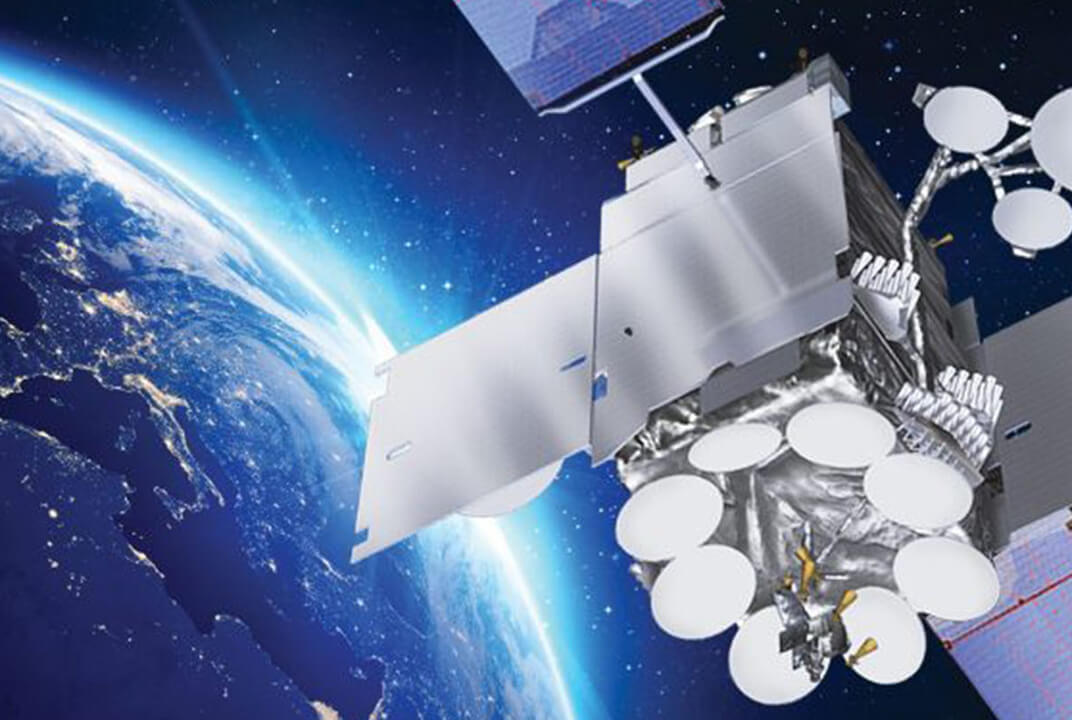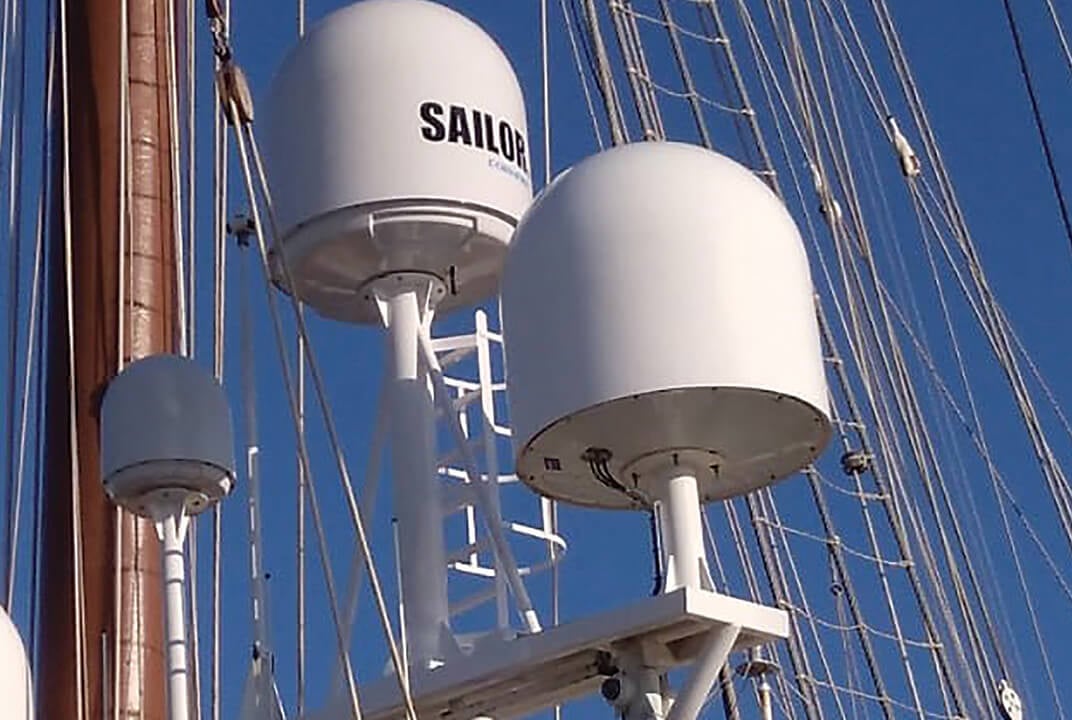Insight | The four “must have” qualities of airborne satellite services
The four “must have” qualities of airborne satellite services
Government
Peter Hadinger, President, U.S. Government Business Unit, Inmarsat, on how worldwide Global Xpress is positioned to bring essential wideband satellite services to government customers conducting airborne operations, anywhere around the globe.
Today’s airborne military operations require satellite connectivity which ‘flies’ as fast as they do – regardless of where on the globe they are heading.
Yet, commanders need more than speed. They seek a superior level of secured satellite throughput to support data-intensive missions, such as Airborne Intelligence, Surveillance and Reconnaissance (AISR).
Recently, during Satellite 2016 at the Gaylord National Convention Center, National Harbor, MD, I had the opportunity to speak about airborne-driven satellite communications (SATCOM) trends and developments in a Satellite Industry Association’s panel session titled “Airborne Satellite Services for Government Needs.” I was able to explain how Inmarsat is offering unique solutions in two bands – Global Xpress Ka-band and L-band – so the aero community can address requirements for global, mobile communications on demand.
What’s more, customers in the airborne community can benefit from our SATCOM as a Service, with on-demand access to end-to-end satellite capability. At Inmarsat, we recognize that users increasingly no longer want to run their own networks. SATCOM as a Service makes this easy, with no infrastructure charges or research and development investment on the part of customers. Airborne operators travel from one location to another, and simply ‘plug in’ to get what they need, when they need it. Thanks to our solid Service Level Agreements (SLAs) and Committed Information Rates (CIR), the quality of the acquired service is assured.
To further elaborate, I told the audience that the federal customer is asking us to provide what I call the “Two Cs and Two Rs”:
Coverage: Military users must have confidence that the coverage will follow them wherever they go. They want satellite services which bring outstanding capabilities without any pre-planning to arrange for them. It is all about going somewhere, plugging in the equipment and seamlessly accessing the same standard of communications that you get at your home station.
Through Global Xpress, Inmarsat is meeting these expectations with ‘anytime/anywhere’ global wideband coverage. The result of a $1.6 billion investment on the part of Inmarsat, Global Xpress is the first and only commercial high-throughput network that spans the world. Provided by a single operator, it delivers seamless, globally available, high-speed Ka-band connectivity for aviation missions. With this, AISR (including Unmanned Aerial Vehicles) officially enters the new era of worldwide wideband availability, with Inmarsat’s commercial SATCOM (COMSATCOM) fully interoperable with military SATCOM (MILSATCOM).
In addition to Global Xpress, Inmarsat L-band provides global, seamless coverage even in adverse weather conditions, establishing communications to mobile users anywhere in the world. Both type of services’ antennas are small and lightweight, making them especially suited for the full range of mobile AISR missions.
Consistency. Have you ever tried to obtain satellite services at the edge of a coverage area, only to encounter highly degraded performance? Unlike traditional transponded systems, the Global Xpress spot beam architecture provides a uniform distribution of power, allowing for frequency reuse and a consistent, uninterrupted user experience. Additionally the high capacity overlay beams are steerable across the view of the satellites which cover the world, so Global Xpress ‘follows’ a plane no matter how high it is going or how many thousands of miles it is traveling.
Reliability: From the very beginning, Inmarsat has supported safety of life for all communities. When airborne users head to a troubled area where lives are at stake, they need to know that the satellite service they depend upon for voice, data and video transmissions will be there. Unlike regional operators who build systems to cover specific geographic areas and then by “stitching together” regional capacity to claim global coverage, Inmarsat starts with an end-to-end global design and adds enhanced flexibility for hot spots on an ‘as needed’ basis. It’s not enough to deliver large capacity if it’s not where an imminent need is, either on-demand or planned in advance. Our service packages (such as the aforementioned SATCOM as a Service) further underscore the reliability of Inmarsat solutions, offering managed services everywhere and leased services where and when they are needed for mission success.
Regulatory: Beyond excellence in technological innovation and execution, we are committed to working closely with international regulatory officials to respond effectively to all compliance specifications. The Global Xpress secure enclave positions us to meet the most stringent security requirements for classified information by hosting customer-specific technology and equipment in secure enclaves built at our Satellite Access Stations (SAS). For highly mobile aeronautical traffic in particular, it is key to earn authorization for satellite services wherever the planes are going. Inmarsat has more than a generation of strong regulatory experience in supporting worldwide mobile operations that is applied to Global Xpress and its future satellite systems as well to afford regulatory access around the world for its users. This regulatory access success is one of the many hallmarks of a mobility-focused satellite operator committed to support global mobile missions.
It was extremely rewarding to take part in this kind of panel discussion, and to highlight this exciting time for Inmarsat. We’ve set the gold standard for global, mobile and reliable SATCOM for more than 35 years. With more ongoing, exciting developments in Global Xpress and our next Inmarsat-6 constellation, we expect to continue setting this standard for decades to come.
Yet, the future is now for Global Xpress, and we are looking forward to providing government customers the best value for their critical missions, on a global network they can trust.
About the author
Peter Hadinger leads Inmarsat’s business unit responsible for all U.S. Government sales and programs. He has recently been responsible for developing the government-focused capabilities and services of Inmarsat’s new Global Xpress program. Previously he spent 30 years as a leader in technology development, engineering and government spacecraft programs at Northrop Grumman. He holds multiple patents in advanced communications.
Peter’s diverse regulatory and policy background includes leadership roles in the WTO Telecom Services Agreement, the FCC World Radio Conference Advisory Committee, the President’s National Security Telecommunications Advisory Committee and a fellowship in the U.S. Senate.
Peter received his BSEEE from California State Polytechnic University, an MBA with emphasis in finance and strategic planning from George Mason University, and serves on engineering advisory boards at Virginia Tech.


